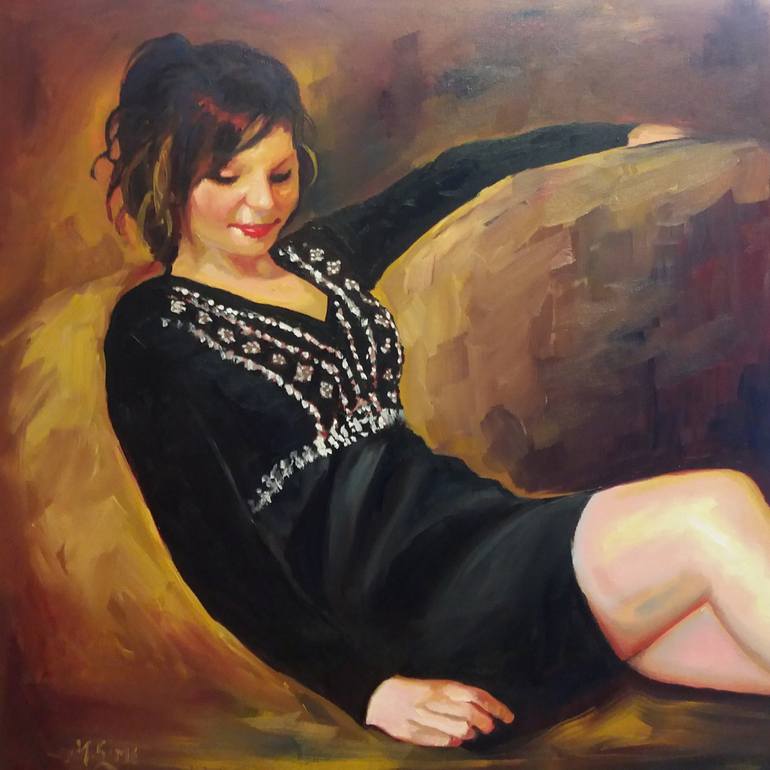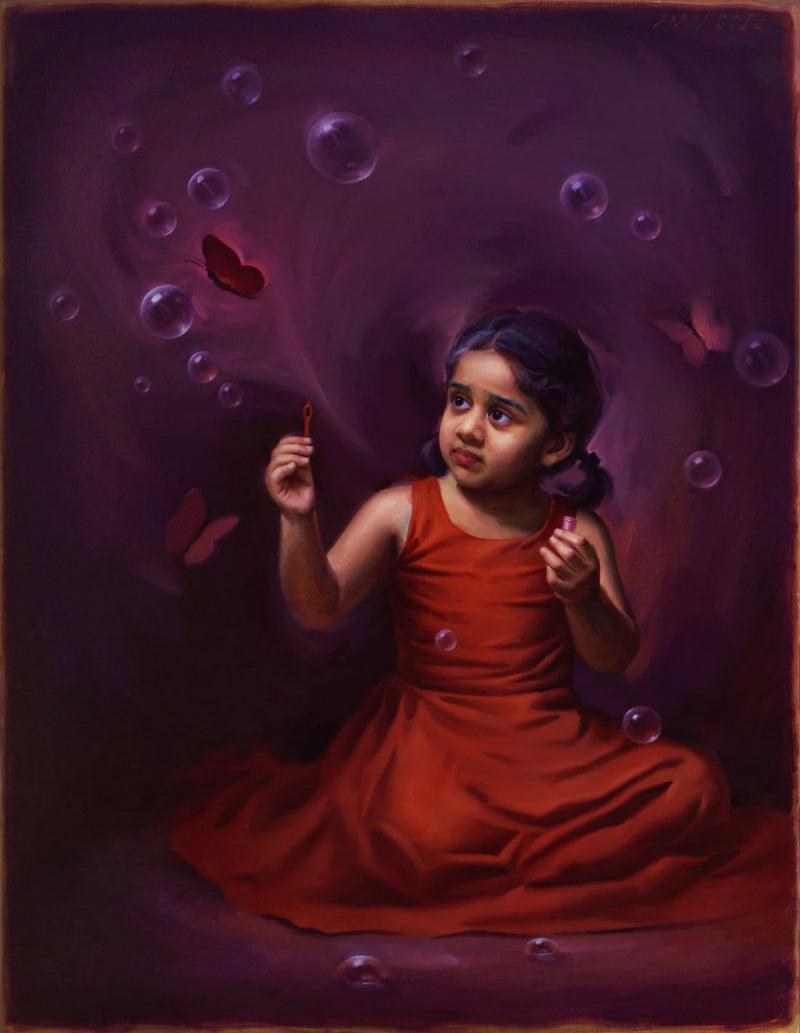Figurative Oil Painting: From Concept to Canvas - A Step-by-Step Strategy
Figurative Oil Painting: From Concept to Canvas - A Step-by-Step Strategy
Blog Article
A Trip Through the Globe of Figurative Oil Painting: Discovering the One-of-a-kind Attributes and Emotional Deepness of the Tool

Background of Figurative Oil Paint
Arising throughout the late Middle Ages and growing throughout the Renaissance, figurative oil painting has a rich background that reflects both imaginative technology and cultural evolution. Oil paints were used in Europe as a way to boost the luminance and depth of shade in art work. Artists such as Jan van Eyck spearheaded the tool, showing its prospective to capture detailed details and appearances, hence enabling for an extra lifelike representation of the human type.
As the Renaissance proceeded, renowned figures like Leonardo da Vinci and Michelangelo expanded the limits of figurative oil painting. They emphasized physiological accuracy and point of view, producing jobs that shared feeling and narrative depth. The tool's flexibility permitted testing with light and darkness, resulting in the growth of chiaroscuro strategies that even more enhanced the aesthetic experience.
Special Attributes of the Tool
The development of metaphorical oil paint has been significantly affected by the distinct characteristics of the medium itself. Oil paint, composed of pigments put on hold in oil, offers musicians an exceptional versatility that enables a wide variety of surfaces and textures. Its slow drying out time makes it possible for careful blending and layering, which can produce depth and luminance unattainable in various other tools.
Moreover, oil paint's rich pigmentation gives vibrant shades that preserve their strength with time. This particular is vital in figurative painting, where capturing the subtleties of skin tones and emotional expressions is critical. The ability to attain subtle slopes and soft changes enhances the natural high quality of subjects, enabling artists to share complicated moods.
Additionally, oil paint sticks well to numerous surface areas, such as canvas, timber, and metal, broadening the scope of imaginative expression. The medium's flexibility sustains different approaches, from comprehensive realism to expressive brushwork, enabling musicians to explore their specific styles.
Inevitably, the one-of-a-kind residential or commercial properties of oil paint not just improve the aesthetic experience but also equip musicians to communicate extensive narratives, making figurative oil painting a deeply expressive art kind.
Designs and strategies Used
Within the world of figurative oil paint, musicians use a varied range of strategies and designs that add to the deepness and richness of their job. One famous method is polishing, where clear layers of paint are applied over dried out layers, enabling light to penetrate and mirror, boosting brightness and depth. This approach is typically used to attain a sense of realistic look and complexity in skin tones.
Another method is impasto, where thick layers of paint are applied with a combination knife or brush, producing a distinctive surface that includes a three-dimensional top quality to the paint. This style can stimulate a visceral response, drawing the visitor in with its responsive nature.
Musicians likewise explore different brushwork designs, from fine, in-depth strokes that capture complex attributes to wider, a lot more meaningful strokes that convey motion and feeling (figurative oil painting). The choice of color scheme considerably influences the overall state of mind of a piece, with warm tones usually passing on sensations of convenience and amazing tones recommending melancholy
Additionally, the assimilation of find chiaroscuro, the contrast between light and shadow, enables musicians to develop remarkable results that boost the narrative top quality of their work. Each technique and style is meticulously selected to raise the customer's experience and understanding.
Psychological Deepness in Metaphorical Art
Emotional deepness acts as a keystone in metaphorical art, permitting musicians to transcend mere representation and involve viewers on an extensive level. This emotional vibration is often accomplished with the nuanced representation of human figures, expressions, and communications. Artists harness the power of shadow, shade, and light to stimulate sensations that resonate deeply with the audience, producing a visceral connection to the subject matter.
In figurative oil painting, the intricate layering of paint can reflect the complexities of human feeling. The selection of scheme, whether cozy or trendy, plays an essential role in establishing the state of mind and ambience of a piece. Softer hues might stimulate harmony and self-questioning, while bold, different shades can communicate stress and dramatization.

Influential Artists and Their Functions
Numerous prominent musicians have actually substantially shaped the landscape of figurative oil paint, each adding distinct viewpoints and techniques that continue to motivate modern developers. Among these musicians, Lucian Freud stands out for his intense emotional deepness and raw portrayal of the human form, commonly obscuring the lines in between beauty and decay. Freud's works, identified by thick, impasto brushstrokes, invite audiences to face the intricacies of identification and susceptability.

Likewise, Andrew Wyeth's precise realistic look in pieces like "Christina's Globe" captures profound stories within seemingly easy make-ups. His usage of light and darkness evokes a feeling of fond memories and psychological resonance, drawing customers into the intimate worlds he represents.
In the world of contemporary art, Kehinde Wiley has obtained acknowledgment for his lively, epic pictures that challenge traditional ideas of depiction. By placing individuals of shade in contexts reminiscent of timeless portraiture, Wiley's job redefines the canon of art background.
These artists, along with others, have not only enriched figurative oil paint but have actually likewise expanded the dialogue bordering emotion, society, and identity, making certain that the medium continues to be an essential kind of expression in the art world. figurative oil painting.
Verdict
Finally, figurative oil painting continues to be a powerful tool that encapsulates the intricacies of human emotion via its rich pigmentation and functional methods. The historic evolution of this art type, combined with its special qualities, permits profound creative expression. Strategies such as glazing and impasto enhance the psychological vibration of each piece, while the contributions of significant artists remain to shape the discussion and motivate surrounding this ageless category. The trip through figurative oil paint exposes its lasting importance in the art globe.
The expedition of figurative oil painting offers a profound understanding into the interplay of technique, emotion, and historic context that defines this venerable medium. Oil paint, made up of pigments put on hold in oil, uses musicians an impressive flexibility that permits for a broad array of coatings and appearances.Within the world of figurative oil painting, artists employ a varied array of methods and styles that contribute to the depth and splendor of their job.Countless significant musicians have substantially shaped the landscape of metaphorical oil paint, each adding special point of views and methods that continue to inspire modern designers.In go to website conclusion, metaphorical oil painting remains an effective tool that encapsulates the complexities of human feeling with its rich coloring and functional methods.
Report this page